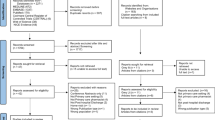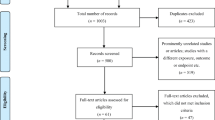Abstract
Clinical pharmacists provide beneficial services to adult patients, though their benefits for paediatric hospital patients are less defined. Five databases were searched using the MeSH terms ‘clinical pharmacist’, ‘paediatric/paediatric’, ‘hospital’, and ‘intervention’ for studies with paediatric patients conducted in hospital settings, and described pharmacist-initiated interventions, published between January 2000 and October 2017. The search strategy after full-text review identified 12 articles matching the eligibility criteria. Quality appraisal checklists from the Joanna Briggs Institute were used to appraise the eligible articles. Clinical pharmacist services had a positive impact on paediatric patient care. Medication errors intercepted by pharmacists included over- and under-dosing, missed doses, medication history gaps, allergies, and near-misses. Interventions to address these errors were positively received, and implemented by physicians, with an average acceptance rate of over 95%. Clinical pharmacist-initiated education resulted in improved medication understanding and adherence, improved patient satisfaction, and control of chronic medical conditions.
Conclusion: This review found that clinical pharmacists in paediatric wards may reduce drug-related problems and improve patient outcomes. The benefits of pharmacist involvement appear greatest when directly involved in ward rounds, due to being able to more rapidly identify medication errors during the prescribing phase, and provide real-time advice and recommendations to prescribers.
What is Known: • Complex paediatric conditions can require multiple pharmaceutical treatments, utilised in a safe manner to ensure good patient outcomes • The benefits of pharmacist interventions when using these treatments are well-documented in adult patients, though less so in paediatric patients | |
What is New: • Pharmacists are adept at identifying and managing medication errors for paediatric patients, including incorrect doses, missed doses, and gaps in medication history • Interventions recommended by pharmacists are generally well-accepted by prescribing physicians, especially when recommendations can be made during the prescribing phase of treatment |

Similar content being viewed by others
Abbreviations
- DRP:
-
Drug-related problem
- ED:
-
Emergency department
- JBI:
-
Joanna Briggs Institute
- NICU:
-
Neonatal intensive care unit
- PICU:
-
Paediatric intensive care unit
- PRISMA:
-
Preferred Reporting Items for Systematic Reviews and Meta-Analyses
- RCT:
-
Randomised controlled trial
References
Alagha HZ, Badary OA, Ibrahim HM, Sabri NA (2011) Reducing prescribing errors in the paediatric intensive care unit: an experience from Egypt. Acta Paediatr 100(10):e169–e174
Bahnasawy SM, El Wakeel LM, Beblawy NE, El-Hamamsy M (2017) Clinical pharmacist-provided services in iron-overloaded beta-thalassaemia major children: a new insight into patient care. Basic Clin Pharmacol Toxicol 120(4):354–359
Barber ND, Batty R, Ridout DA (1997) Predicting the rate of physician-accepted interventions by hospital pharmacists in the United States. Am J Health Syst Pharm 54(4):397–405
Batchelor HK, Marriott JF (2015) Paediatric pharmacokinetics: key considerations. Br J Clin Pharmacol 79(3):395–404
Bates DW et al (2003) Ten commandments for effective clinical decision support: making the practice of evidence-based medicine a reality. J Am Med Inform Assoc 10(6):523–530
Bhatt-Mehta V et al (2013) Recommendations for meeting the pediatric patient's need for a clinical pharmacist: a joint opinion of the pediatrics practice and research network of the American College of Clinical Pharmacy and the Pediatric Pharmacy Advocacy Group. Pharmacotherapy 33(2):243–251
Blix HS, Viktil KK, Moger TA, Reikvam A (2010) Drugs with narrow therapeutic index as indicators in the risk management of hospitalised patients. Pharm Pract (Granada) 8(1):50–55
Blum KV, Abel SR, Urbanski CJ, Pierce JM (1988) Medication error prevention by pharmacists. Am J Hosp Pharm 45(9):1902–1903
Central Intelligence Agency. The World Factbook. Retrieved 11th March 2018. Available from: https://www.cia.gov/library/publications/the-world-factbook/geos/xx.html
Condren ME, Haase MR, Luedtke SA, Gaylor AS (2004) Clinical activities of an academic pediatric pharmacy team. Ann Pharmacother 38(4):574–578
Da Silva FM, Jacob E, Nascimento LC (2010) Impact of childhood cancer on parents’ relationships: an integrative review. J Nurs Scholarship 42(3):250–261
El Borolossy R, El Wakeel L, El Hakim I, Badary O (2014) Implementation of clinical pharmacy services in a pediatric dialysis unit. Pediatr Nephrol 29(7):1259–1264
Fernández-Llamazares CM, Calleja-Hernandez MA, Manrique-Rodriguez S, Pérez-Sanz C, Duran-García E, Sanjurjo-Saez M (2012) Impact of clinical pharmacist interventions in reducing paediatric prescribing errors. Arch Dis Child 97(6):564–568
Fernández-Llamazares CM, Pozas M, Feal B, Cabañas MJ, Villaronga M, Hernández-Gago Y, Ruiz de Villegas M, Álvarez-del-Vayo C (2013) Profile of prescribing errors detected by clinical pharmacists in paediatric hospitals in Spain. Int J Clin Pharm 35(4):638–646
Ghaleb MA, Barber N, Franklin BD, Yeung VW, Khaki ZF, Wong IC (2006) Systematic review of medication errors in pediatric patients. Ann Pharmacother 40(10):1766–1776
Ghaleb MA, Barber N, Franklin BD, Wong ICK (2010) The incidence and nature of prescribing and medication administration errors in paediatric inpatients. Arch Dis Child 95(2):113–118
Graabaek T, Kjeldsen LJ (2013) Medication reviews by clinical pharmacists at hospitals lead to improved outcomes: a systematic review. Basic Clin Pharmacol Toxicol 112(6):359–373
Huynh C et al (2016) An evaluation of the epidemiology of medication discrepancies and clinical significance of medicines reconciliation in children admitted to hospital. Arch Dis Child 101(1):67–71
Kaboli PJ, Hoth AB, McClimon BJ (2006) Clinical pharmacists and inpatient medical care: a systematic review. Arch Intern Med 166(9):955–964
Kaushal R, Bates DW, Landrigan C, McKenna KJ, Clapp MD, Federico F, Goldmann DA (2001) Medication errors and adverse drug events in pediatric inpatients. JAMA 285(16):2114–2120
Kaushal R, Bates DW, Abramson EL, Soukup JR, Goldmann DA (2008) Unit-based clinical pharmacists’ prevention of serious medication errors in pediatric inpatients. Am J Health-Syst Ph 65(13):1254–1260
Krupicka MI, Bratton SL, Sonnenthal K, Goldstein B (2002) Impact of a pediatric clinical pharmacist in the pediatric intensive care unit. Crit Care Med 30(4):919–921
Kwan JL, Lo L, Sampson M, Shojania KG (2013) Medication reconciliation during transitions of care as a patient safety strategy: a systematic review. Ann Intern Med 158(5Pt2):397–403
Maat B, San AY, Bollen CW, van Vught AJ, Egberts TC, Rademaker CM (2013) Clinical pharmacy interventions in paediatric electronic prescriptions. Arch Dis Child 98(3):222–227
Marconi GP, Claudius I (2012) Impact of an emergency department pharmacy on medication omission and delay. Pediatr Emerg Care 28(1):30–33
Moffett BS, Mott AR, Nelson DP, Gurwitch KD (2008) Medication dosing and renal insufficiency in a pediatric cardiac intensive care unit: impact of pharmacist consultation. Pediatr Cardiol 29(4):744–748
Moher D, Liberati A, Tetzlaff J, Altman DG, Prisma Group (2009) Preferred reporting items for systematic reviews and meta-analyses: the PRISMA statement. PLoS Med 6(7):e1000097
Moola S, et al. Chapter 7: systematic reviews of etiology and risk. In: Aromataris E, Munn Z (editors). Joanna Briggs Institute Reviewer’s Manual. The Joanna Briggs institute, 2017
Mueller SK, Sponsler KC, Kripalani S, Schnipper JL (2012) Hospital-based medication reconciliation practices: a systematic review. Arch Intern Med 172(14):1057–1069
Pedersen CA, Schneider PJ (2001) Santell JP. ASHP national survey of pharmacy practice in hospital settings: prescribing and transcribing—2001. Am J Health-Syst Pharm 58(23):2251–2266
Pedersen CA, Schneider PJ (2014) Scheckelhoff DJ. ASHP national survey of pharmacy practice in hospital settings: prescribing and transcribing—2013. Am J Health-Syst Pharm 71(11):924–942
Pharmaceutical Society of Australia. Integrating pharmacists into primary care teams: Better health outcomes through cost-effective models of care. Submission to the 2015–16 Federal Budget. Accessed 7th Jan 2018. Available from: https://www.psa.org.au/news/submission-2015-16-federal-budget
Prot-Labarthe S, Di Paolo ER, Lavoie A, Quennery S, Bussières JF, Brion F, Bourdon O (2013) Pediatric drug-related problems: a multicenter study in four French-speaking countries. Int J Clin Pharm 35(2):251–259
Strong DK, Tsang GW (1993) Focus and impact of pharmacists’ interventions. Can J Hosp Pharm 46(3):101–108
Struck P, Pedersen KH, Moodley P, Rasmussen M (2007) A pilot study of pharmacist;initiated interventions in drug therapy in an Australian paediatric hospital. EJHP Sci 13(4):105–112
Swedlund MP, Schumacher JB, Young HN, Cox ED (2012) Effect of communication style and physician-family relationships on satisfaction with pediatric chronic disease care. Health Commun 27(5):498–505
Tufanaru C, Munn Z, Aromataris E, Campbell J, Hopp L. Chapter 3: systematic reviews of effectiveness. In: Aromataris E, Munn Z (editors). Joanna Briggs Institute Reviewer’s Manual. The Joanna Briggs institute, 2017
Virani A, Crown N (2005) The impact of a clinical pharmacist on patient and economic outcomes in a child and adolescent mental health unit. Can J Hosp Pharm 56(3):158–162
Wong IC, Ghaleb MA, Franklin BD, Barber N (2004) Incidence and nature of dosing errors in paediatric medications. Drug Saf 27(9):661–670
Zhang C, Zhang L, Huang L, Luo R, Wen J (2012) Clinical pharmacists on medical care of pediatric inpatients: a single-center randomized controlled trial. PLoS One 7(1):e30856
Acknowledgements
The authors would like to thank the following colleagues for their assistance with the review: M Stelmaschuk, J Hart-Davies, S Maltby, L Pell, K MacFarlane, S Leotta, J Ede, A Bond, and Townsville hospital librarian Bronia Renison. Literature search by Louisa D’Arrietta, Townsville Hospital Librarian, 10/10/2017. The Townsville Hospital, QLD, Australia.
Author information
Authors and Affiliations
Contributions
All authors were responsible for the development of the initial research plan and were involved in quality assessment of eligible articles. AD carried out an independent literature search and was responsible for drafting of the manuscript. KR and MT were responsible for assessing article eligibility and revising of the manuscript drafts. NR and SP assisted in drafting of earlier versions of the manuscript. TK assisted in the literature search, drafting of earlier versions of the manuscript, and review of the final manuscript version.
Corresponding author
Ethics declarations
Conflict of interest
The authors declare that they have no conflict of interest.
Informed consent
Informed consent is not applicable in this study.
Additional information
Communicated by Piet Leroy
Rights and permissions
About this article
Cite this article
Drovandi, A., Robertson, K., Tucker, M. et al. A systematic review of clinical pharmacist interventions in paediatric hospital patients. Eur J Pediatr 177, 1139–1148 (2018). https://doi.org/10.1007/s00431-018-3187-x
Received:
Accepted:
Published:
Issue Date:
DOI: https://doi.org/10.1007/s00431-018-3187-x




